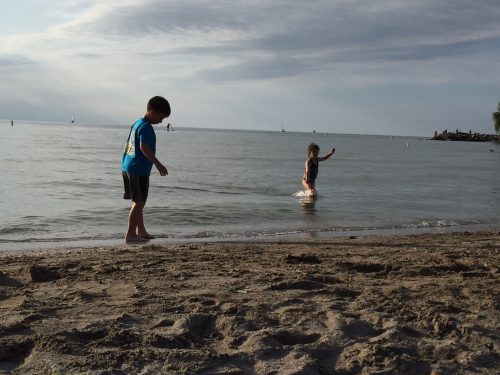BEACHES: Beach safety begins with safe water, daily water-quality predictions resume this week
Posted by John Gonzalez
- 5767 Views
- May 29th, 2017
- in Miscellaneous
- One Comment

Edgewater Beach water quality will be monitored daily through September.
Before swimmers head out for a day at the beach, we’ll be heading out for data at the beach every morning this summer to help keep you safe.
The Northeast Ohio Regional Sewer District has resumed daily water-quality testing at Edgewater, Villa Angela and Euclid Beaches in Cleveland to predict water quality. We will also post public notification daily for Edgewater and Villa Angela, two popular beach destinations, throughout the summer starting later this week. Daily testing will continue through September 7.
“The Sewer District is one of the few entities that conducts daily water quality testing in the nation,” said Director of Watershed Programs Frank Greenland. “It’s a reflection of our mission to protect both the environment and public health.”
A Nowcast prediction of water quality will be posted each morning by 9:30 a.m., seven days a week. The latest beach water quality information can be found at neorsd.org/beaches or by following our official water quality-report Twitter account @NEORSDbeaches for morning predictions every day. Nowcast prediction signage also will be posted at the entrance of Edgewater, Euclid and Villa Angela Beaches. Beach users who are consulting the Nowcast should be aware that water quality conditions can deteriorate rapidly as a result of storm conditions. The Nowcast program does not account for water quality changes which happen after the morning Nowcast is issued.
RELATED NEWS: Sewer District beach sampling plan is available for public comment through June 16
Many variables can impact the water quality of the beaches, including the presence of waterfowl at the beach, the influence of Lake Erie currents, the fate of pollutants like raw sewage discharged into local water bodies after heavy storms, and stormwater run-off, which can carry motor oil, garbage and other pollutants into local water bodies.
As this data can affect water-quality predictions, water quality is not an indication of whether a beach is open or closed to the public. That decision may or may not be related to water quality, often because factors beyond water quality—such as wave conditions, rip currents, debris, or other issues—also affect the actual beach status. For the latest beach status, beach goers can visit clevelandmetroparks.com/swimming. Cleveland Metroparks lifeguards will be on duty at Edgewater Beach and Villa Angela Beach beginning Saturday, June 3 through August 13 from 11am to 7pm daily and then weekends only through Labor Day.
Additionally, Sewer District technology will continue to contribute to better data. We will continue to use a Mass Spectrometer to monitor beach waters for the toxins produced by blue-green algae (cyanobacteria), the same algae that caused the drinking water ban in Toledo in 2014. The Sewer District can use this instrument to analyze for other compounds, as well, like those found in pharmaceuticals and personal-care products.

Comments ( 1 )
Back in the early 70’s Edgewater Beach local waters were chlorinated. Liguid chlorine was pumped through a series of pipes laid in the water to kill bacteria. Same occurred at White City Beach, near Easterly wwtp.
Ed Kelly